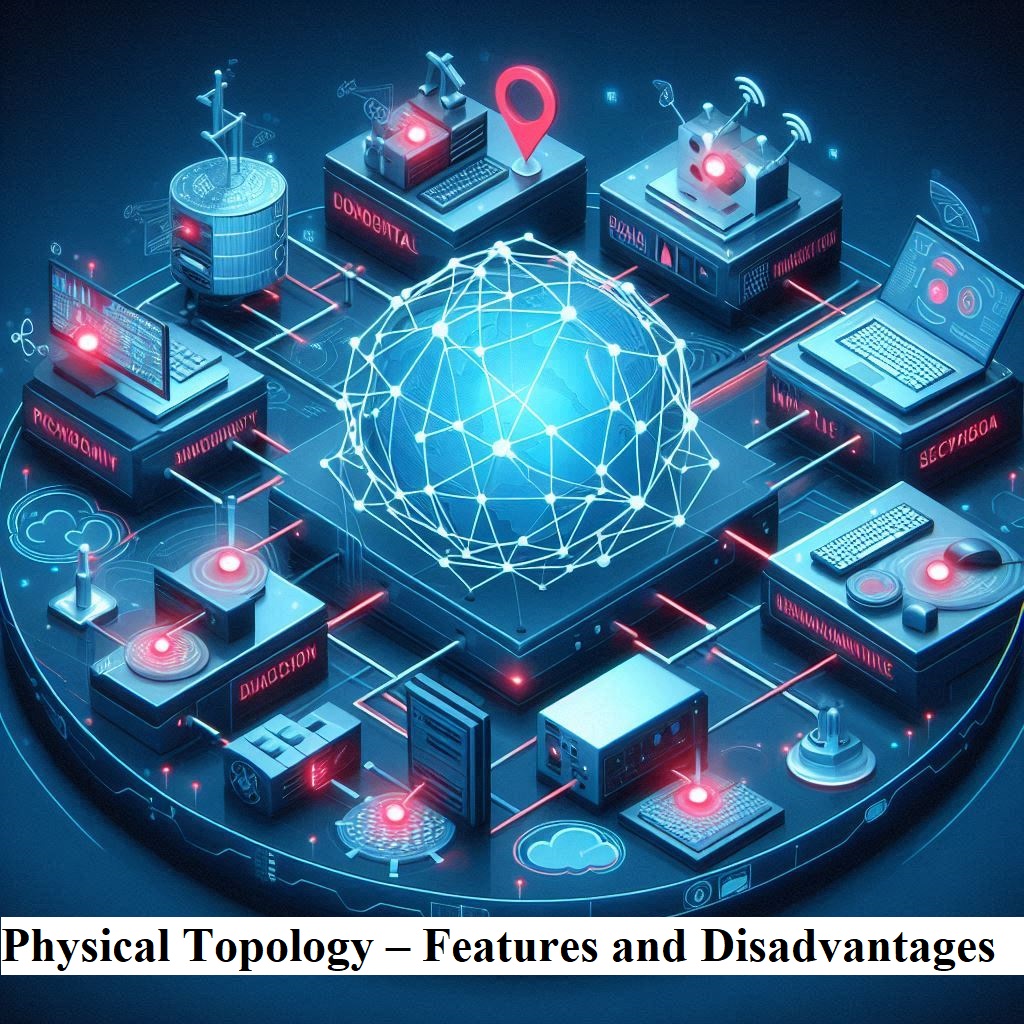Physical topology refers to the actual physical arrangement and connections of network devices, while logical topology refers to the logical flow of data through the network, which may differ from the physical layout. Both are important considerations in network design and operation. Physical topology describes the actual physical layout and interconnections of network components, which impacts factors like cost, reliability, scalability, and manageability of the network infrastructure.
The key differences between physical and logical topology are:
Physical Topology
- Describes the physical layout and interconnections of network devices and cables.
- Focuses on the actual physical arrangement, such as star, bus, ring, mesh, or hybrid topologies.
- Determines factors like cost, bandwidth, and scalability based on the physical design.
- Examples include star, mesh, bus, and ring topologies.
Logical Topology
- Describes how data flows and is transmitted between devices, independent of the physical layout.
- Focuses on the logical data paths and communication patterns, such as logical bus or logical ring.
- Determines factors like optimal data flow and transmission speed.
Features / Benefits of Physical Topology
-
Physical Layout and Connections
Describes the actual physical arrangement and interconnections of network devices, cables, and other hardware components. Focuses on the geometric layout, such as star, bus, ring, mesh, or hybrid topologies. Determines factors like cost, bandwidth, and scalability based on the physical design.
-
Single Point of Failure
In some physical topologies like bus or star, the failure of a central component (e.g. bus cable, hub) can cause the entire network to go down. Mesh topologies are more resilient as they have redundant connections.
-
Ease of Installation and Reconfiguration
Some physical topologies like star are easier to install and reconfigure compared to complex mesh topologies. Adding, moving or removing devices is simpler in star or bus compared to fully connected mesh.
-
Privacy and Security
Mesh topologies provide more privacy as data travels over dedicated point-to-point links. Shared media topologies like bus make it easier for unauthorized access to network traffic.
The Main Disadvantages of Bus Topology
The main disadvantages of bus topology are the limited scalability, single point of failure, vulnerability to physical damage, data collision issues, and lack of privacy, making it less suitable for large or critical networks. The simplicity and cost-effectiveness of bus topology make it more appropriate for small, localized networks.
-
Limited Cable Length
This means that bus topology is not suitable for large networks.
-
Difficult to Isolate Problems
Bus topology can be difficult to isolate problems.
-
Vulnerability to Physical Damage
The entire network is dependent on the central bus cable. If the bus cable malfunctions or is physically damaged, the whole network may fail.
-
Data Collision Issues
Since all devices share the same communication channel (the bus), there is a higher risk of data collisions as the number of nodes increases. This can degrade network performance.
-
Lack of Privacy
In a bus topology, all data transmitted on the network is accessible to all connected devices, which can compromise data privacy and security.




